Floral motifs have been an intrinsic part of Indian paintings, carrying profound cultural, symbolic, and aesthetic significance. From the exquisite floral patterns of Mughal miniatures to the expressive interpretations in modern Indian paintings, flowers have continuously inspired artists across centuries. These motifs embellish compositions and convey more profound beauty, transience, and spiritual meanings.
In this blog, we explore the evolution of floral themes in Indian art, focusing exclusively on paintings—from historical masterpieces to contemporary expressions available on Mojarto, where collectors can discover and purchase exquisite floral-themed artworks.
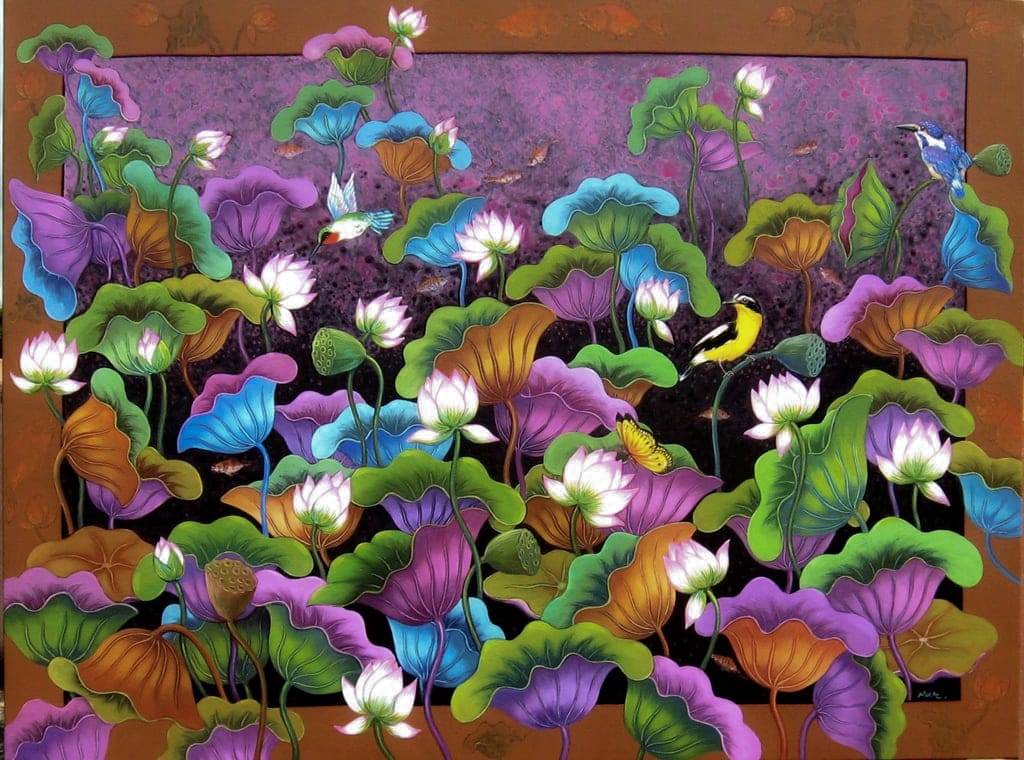
Floral Motifs in Mughal Paintings: A Legacy of Elegance
1. The Persian Influence on Mughal Art
The Mughal era (16th–19th century) marked a golden age for floral artistry in paintings. Inspired by Persian miniatures, Mughal artists seamlessly integrated floral elements into their works. Emperor Akbar’s ateliers first experimented with floral themes, but it was under Jahangir and Shah Jahan that the art of floral representation flourished.
Some of the finest examples of floral motifs in Mughal art include:
- “Jahangir’s Album” (17th century) – A collection of folios featuring intricate floral borders alongside lifelike portraits and calligraphy.
- “Shah Jahan’s Album” – Showcasing lavishly decorated floral arabesques framing elegant miniature paintings.
2. Botanical Realism in Mughal Miniatures
Unlike the highly stylised floral forms in earlier Persian manuscripts, Mughal artists painted flowers with remarkable realism. Inspired by European botanical studies and their love for nature, they depicted various flowers, such as tulips, irises, and lotuses, with scientific accuracy.
A notable example is Ustad Mansur, a court painter renowned for his botanical studies, which included detailed depictions of rare flowers from distant lands. His works are considered some of the most refined floral renderings in Indian art history.
3. Symbolism of Flowers in Mughal Art
Floral elements in Mughal paintings were not just ornamental; they carried symbolic meanings:
- Lotus: A symbol of purity and divinity, often featured in royal portraits.
- Tulips and Roses: Representations of love, beauty, and imperial grandeur.
- Marigolds and Lilies: Associated with vitality and renewal.
Mughal motifs later influenced textile design, architecture (Taj Mahal’s floral inlays), and even contemporary Indian paintings.
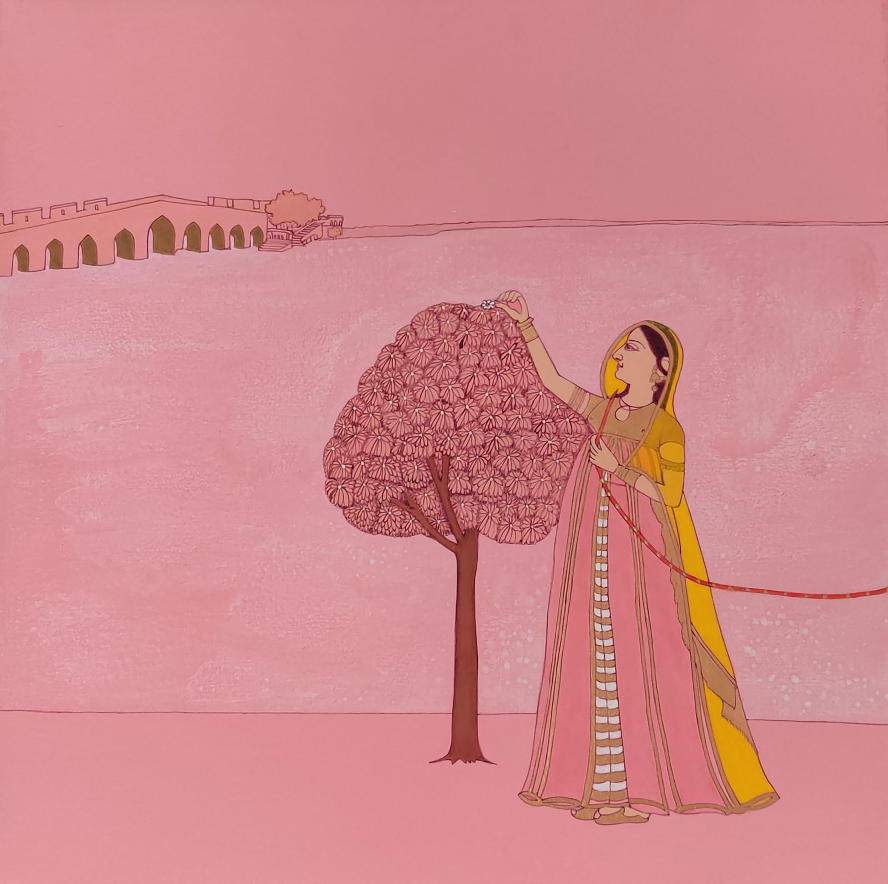
Floral Motifs in Indian Art: From Mughal Paintings to Modern Creations
Floral motifs have been an intrinsic part of Indian paintings, carrying profound cultural, symbolic, and aesthetic significance. From the exquisite floral patterns of Mughal miniatures to the expressive interpretations in modern Indian paintings, flowers have continuously inspired artists across centuries. These motifs embellish compositions and convey more profound beauty, transience, and spiritual meanings.
In this blog, we explore the evolution of floral themes in Indian art, focusing exclusively on paintings—from historical masterpieces to contemporary expressions available on Mojarto, where collectors can discover and purchase exquisite floral-themed artworks.
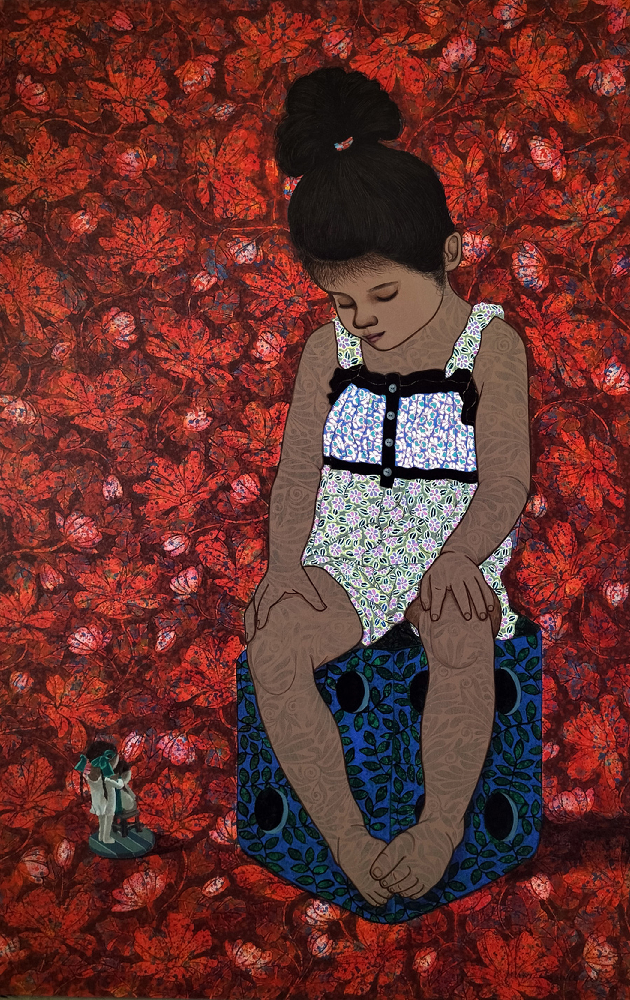
Floral Motifs in Mughal Paintings: A Legacy of Elegance
1. The Persian Influence on Mughal Art
The Mughal era (16th–19th century) marked a golden age for floral artistry in paintings. Inspired by Persian miniatures, Mughal artists seamlessly integrated floral elements into their works. Emperor Akbar’s ateliers first experimented with floral themes, but it was under Jahangir and Shah Jahan that the art of floral representation flourished.
Some of the finest examples of floral motifs in Mughal art include:
- “Jahangir’s Album” (17th century) – A collection of folios featuring intricate floral borders alongside lifelike portraits and calligraphy.
- “Shah Jahan’s Album” – Showcasing lavishly decorated floral arabesques framing elegant miniature paintings.
2. Botanical Realism in Mughal Miniatures
Unlike the highly stylised floral forms in earlier Persian manuscripts, Mughal artists painted flowers with remarkable realism. Inspired by European botanical studies and their love for nature, they depicted various flowers, such as tulips, irises, and lotuses, with scientific accuracy.
A notable example is Ustad Mansur, a court painter renowned for his botanical studies, which included detailed depictions of rare flowers from distant lands. His works are considered some of the most refined floral renderings in Indian art history.
3. Symbolism of Flowers in Mughal Art
Floral elements in Mughal paintings were not just ornamental; they carried symbolic meanings:
- Lotus: A symbol of purity and divinity, often featured in royal portraits.
- Tulips and Roses: Representations of love, beauty, and imperial grandeur.
- Marigolds and Lilies: Associated with vitality and renewal.
Mughal motifs later influenced textile design, architecture (Taj Mahal’s floral inlays), and even contemporary Indian paintings.
Floral Themes in Rajput and Pahari Paintings
1. Rajput Miniatures
Parallel to Mughal art, Rajput paintings from Rajasthan developed a distinct approach to floral motifs. Unlike the realism of Mughal botanical studies, Rajput art favoured stylised floral elements as part of vibrant compositions.
- In “Ragamala Paintings,” flowers symbolise emotions and seasons.
- Kishangarh school is particularly famous for its romanticised portrayal of women (often inspired by Radha) amid floral landscapes, creating dreamlike compositions.
2. Pahari Paintings
Pahari paintings (from the Himalayan foothills) embraced floral themes with a lyrical quality. The Kangra school, known for its delicate colours and fluid lines, often depicted Krishna-Radha love scenes amid lush flower gardens, emphasising romance and devotion.
One of the most celebrated Pahari works, “Bani Thani” (by Nihal Chand, 18th century), features a woman adorned with floral jewellery, symbolising beauty and grace.
The Colonial Influence and Bengal School’s Revival of Floral Aesthetics
1. Floral Symbolism in Company Paintings
During British colonial rule, Indian artists adapted European botanical studies into their work. The Company School of Painting (18th–19th century), developed under British patronage, produced scientific illustrations of Indian flora while retaining traditional decorative styles.
2. Bengal School of Art
In the early 20th century, the Bengal School, led by Abanindranath Tagore and Nandalal Bose, revived Indian artistic traditions while incorporating modern elements. Floral motifs were often used symbolically in their paintings:
- Abanindranath Tagore’s “Bharat Mata” portrays the mother goddess holding lotus flowers, symbolising purity and spiritual awakening.
- Nandalal Bose’s murals often feature lotus and other native flowers as part of Indian heritage.
These artists redefined floral aesthetics in Indian painting, influencing later modernist interpretations.
Modern and Contemporary Indian Art: A New Vision for Floral Motifs
1. Floral Abstraction in Progressive Artists’ Group
The mid-20th century saw a dramatic shift in Indian painting, with the Progressive Artists’ Group (PAG) breaking away from traditional themes. However, floral motifs persisted in new forms:
- M.F. Husain often incorporated flowers into his abstract yet deeply symbolic compositions.
- S.H. Raza’s “Bindu” series frequently used floral colour palettes, drawing from the spiritual essence of nature.
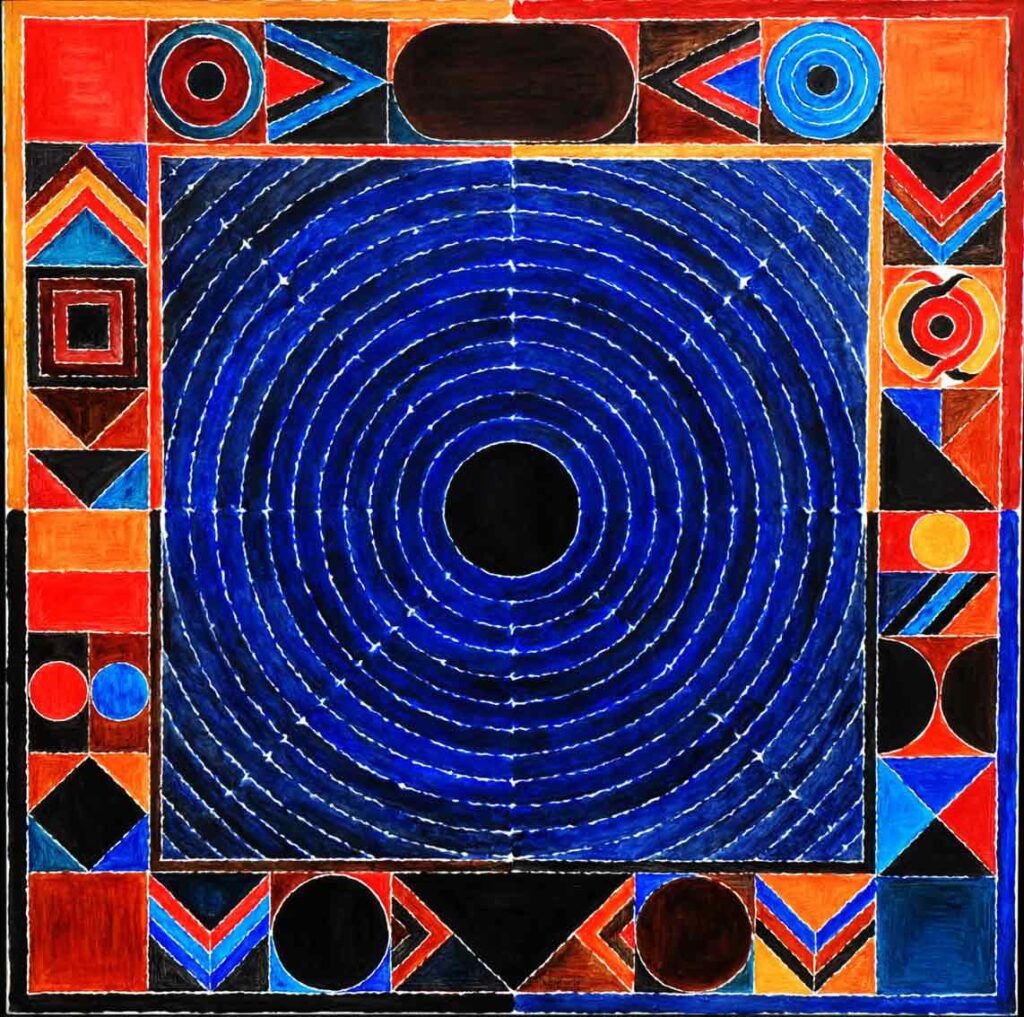
2. Contemporary Artists and Floral Themes
Today, Indian artists continue to explore floral motifs in innovative ways. Many painters on Mojarto reinterpret flowers in abstract, surreal, and hyperrealistic styles, breathing new life into a timeless theme.
Some notable contemporary artists using floral motifs in paintings:
- Seema Kohli – Incorporates flowers into mystical and mythological narratives.
- Gogi Saroj Pal – Depicts women with floral adornments, blending modernity with tradition.
3. The Emotional and Aesthetic Appeal of Floral Motifs in Contemporary Art
Floral paintings today appeal to art collectors for their:
- Timeless beauty – A universal symbol of nature and elegance.
- Emotional depth – Often associated with nostalgia, romance, and tranquillity.
- Versatility – Suitable for diverse artistic expressions, from realism to abstraction.
Art lovers and collectors in Mojarto can explore a vast range of floral paintings that carry forward the legacy of this rich artistic tradition.
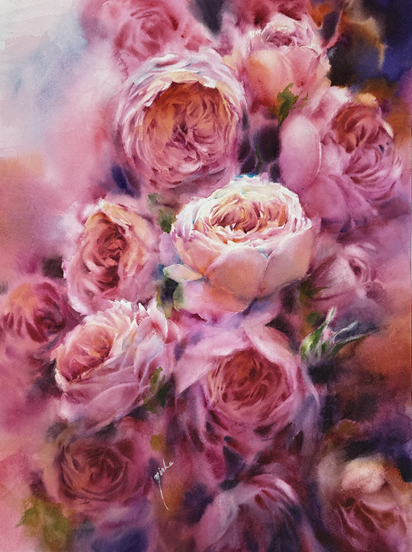
The Enduring Charm of Floral Motifs in Indian Paintings
From Mughal botanical studies to modern abstract interpretations, floral motifs in Indian paintings have evolved yet remained an integral part of artistic expression. Whether symbolising imperial grandeur, divine beauty, or contemporary aesthetics, flowers captivate artists and collectors alike.
For those seeking to own a piece of this timeless tradition, Mojarto offers a curated collection of floral-themed paintings by talented Indian artists. Discover, collect, and bring home the beauty of floral art today.